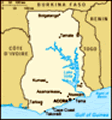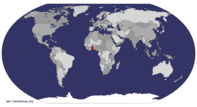Advertisement
Published: June 27th 2006
NOTE*Sorry to subscribers for the 3 emails from travelblog. I kept hitting the button and it kept saying that it wasn't posted. Apparently it was...
I’ve been pretty yuck about being back in the real world. It started last week. I thought it was coming back home, being sick…I’ve had a fever for several days (I finally started taking an antibiotic for the friends living in my stomach), and just the letdown of regular life. But it’s more than that. I’m restless. I want everyone to go where I’ve been, and see what I’ve seen. There is a quote by Mark Twain, “Travel is fatal to prejudice, bigotry, and narrow-mindedness, and many of our people need it sorely on these accounts. Broad, wholesome, charitable views of men and things cannot be acquired by vegetating in one little corner of the earth all one's lifetime”. I want to use less and do more, and stop complaining about how much I hate Bush (and crooked government) if I’m not going to do something about it. I’ve all but stopped watching TV, at least all shows that involve “How to be Super Star Skinny in Seventeen Easy Steps”. So tomorrow morning I start

 Palm trees everywhere
Palm trees everywhere
Palm oil and palm wine are widely used. Palm wine...not so tasty to me!volunteering at the Milagro House and on July 6th I’ll attend my first Lancaster Coalition for Peace and Justice Meeting. The world is too big and messed up for me not to do my part.
So yeah, what I saw on The Journey North. Ghana is a beautiful country. I mean…beautiful people and gorgeous landscape. I can’t even tell you how the beauty of the people made me feel small and extremely unattractive. People in the city are more western in their appearance, but once you leave Accra, people seem much more natural and real. Traveling there reminded me of being in the South. We would pass places and I would think, “This feels and looks like home”. Except for the palm trees, which are everywhere!
On our way to Kumasi, we stopped in Bonwire. Bonwire is a tiny village known for making Kente cloth. Apparently they have been weaving Kente cloth there for over 500 years. So, Bonwire was my first experience with being “taken” by some cute kid. This kid walks up to me and of course I’ll talk to anyone and he says, “Hi, I’m Phillip what’s your name”. And I’m thinking, look this kid
is reaching out (even though almost every kid in the village was “reaching out” to someone getting off the bus). So yeah, my new friend Phillip finds out my name is Angela and before I know it I’m paying 10,000 cedis for a bracelet with my name on it. No big deal, that’s like a $1. But then Phillip is my new best friend and gives me his two email addresses (that’s right…two) and says that I should write to him and send him things. He also suggests that we take a picture together. Once again, that’s cool…memories. However, he lets me know that I should pay him another 10,000 cedis to take a picture with him. This is when I begin to see that Phillip knows a little more about the world than I originally thought. Apparently the kids in Bonwire have learned how to work the tourists. Because of the Kente weaving, Bonwire is a popular tourist stop. I can’t blame Phillip, I’d work the tourist angle too. So I left Bonwire with Kente cloth, two bracelets, a necklace and Phillip’s two yahoo email addresses.
Next we stopped at a village where they hand make Adinkra stamps
for cloth. From my understanding Adinkra literally means saying goodbye to the dead. Adinkra symbols, which represent key ingredients for human existence, are stamped onto fabric which is then worn to the funeral to express how the person felt about their loved one. Now the symbols are worn on everyday clothing and you can find them on just about anything, including wood carvings and jewelry. For example, Sankofa means we must go back and reclaim our past so that we may move forward. So, a man in the village gave us a demonstration from beginning to end…including how they make the ink and carve the symbols into wood. I stamped a cloth with “Peace and Love” for my mom, and one with Sankofa for myself. I think the stamp man got a little frustrated with me, but I’m not really sure why. I felt a little yelled at, but you know I was probably asking questions.
In between our journey to the far north we stopped in Kumasi and visited a University, but you’ve already heard about all that. While in Kumasi we also went to the Cultural Center. You can actually see people hand making their crafts. It

 Adinkra Demonstrations
Adinkra Demonstrations
The ink is made with some kind of wood and made into chips by beating it with big stickswas really hard for me to barter with someone when I just watched them make the item. Speaking of bartering…the Ghanaians are all about bartering for things. At first it’s really fun, because you feel like you’re getting a deal, but after a while you just want to know the bottom line. I overpaid for everything at the Cultural Center. But I got a handmade sundress (it was ready 3 hours later), and a cool piece of art. The guy that made the art was so cute, I wanted to bring him home…but I promised Bailey I wouldn’t bring anyone back with me.
After we left Kumasi we headed to Mole National Park…more on that and my elephant friends in another posting. We stayed at Mole one night before we started the rest of the trip north. Right outside of Mole is a place called Larabanga. Bono and Brian Williams were there about a week before we arrived. Apparently NBC did a piece on the state of Africa and Ghana was one of the countries they profiled. Larabanga is home to the oldest Mosque in West Africa (over 400 years old). It is also home to The Mystic Stone,
which from my understanding was brought from Mecca by the founder of Larabanga. The stone is still there today. I met my next friend in Larabanga, but he didn’t have an email address and didn’t ask me for anything. He just showed me around the village and gave me his address and said, “I want you to be my best friend”. I’m a sucker, because I really did want to bring him home…plus all the little kids in the village. The people there were awesome!
We spent the next two nights at the Kongo Mission. Once again, the people were incredible, but…it was the first place that was unbearably hot. Two nights with a fan blowing out hot air. No lie, I was sweating when I got out of the shower. Even though you didn’t “get out” of the shower. It wasn’t enclosed, it was just kind of there. But, I was in Africa so I wasn’t complaining. One of my favorite memories is from our time at the Kongo Mission. Right behind the Mission was a little village. A couple of us were lucky enough to go into the village and talk with some of the residents. One

 Adinkra Demonstrations
Adinkra Demonstrations
Matt and Sara from our groupman stands out because he actually wasn’t that happy to see us. Apparently when another group was visiting he wanted to talk with them about traditional West African religions. After the group left, the people in the village were really upset with him because they said he was spreading evil. I mean, he was steps from a Mission so I think they are pretty much down with catholicism. It was sad because you could tell he was passionate about tradition, and that he believed people didn’t value that any longer. I was really struck by the fact that he believed there were many different paths to god, but he still wanted to be baptized…just in case. I won’t even get started on the ills of colonialism and the race to make the “heathens” Christian. It has had such a profound effect on the entire country.
Moving on to the crocodiles. That’s right, I said crocodiles. So, sometimes when you’re away from home you do things you wouldn’t normally do. Like, eat chalk. On the second night at Mrs. Ayensu’s house I ate chalk. She kept asking someone to taste it and nobody else would do it, so I did.

 Adinkra Demonstrations
Adinkra Demonstrations
Adinkra cloth and a beautiful kid...Apparently pregnant women in Ghana eat it. No, I am not pregnant nor do I intend to become pregnant. My chalk eating days are over. So yeah, in Paga there is a legend about a crocodile that saved a hunter from a lion. The hunter said his descendants would never eat crocodile meat if the crocodile helped the hunter to safety. Today in Paga it is still illegal to hunt crocodiles or eat crocodile meat. We went to a crocodile pond where the crocs are very docile. It just so happens that you can sit on and/or hold the tail of a crocodile. I decided I would do both. I mean, when would I have another chance to take a picture with the descendant of a crocodile that saved a hunters life???!! Looking back, I could have lost a body part, but at the time I was like “I’m in Africa”.
Finally, we made it to Burkina Faso. You would think that entering another country would be a big deal. You would at least think that the guard would give you more than a passing glance. Nope, we walked into Burkina Faso, took some pictures and walked back out.
I didn’t even get to have my passport stamped. The trip to Burkina Faso was much more eventful than visiting Burkina Faso. It’s kind of like life…it’s a journey, not a destination. Let me tell you, Burkina Faso the destination…not nearly as exciting as the journey.
So that’s The Journey North. We actually had to come back south, and for me that was the most meaningful part of the trip…but I’ll get to that in another post.
Advertisement
Tot: 0.068s; Tpl: 0.015s; cc: 5; qc: 51; dbt: 0.0406s; 1; m:domysql w:travelblog (10.17.0.13); sld: 1;
; mem: 1.2mb





















